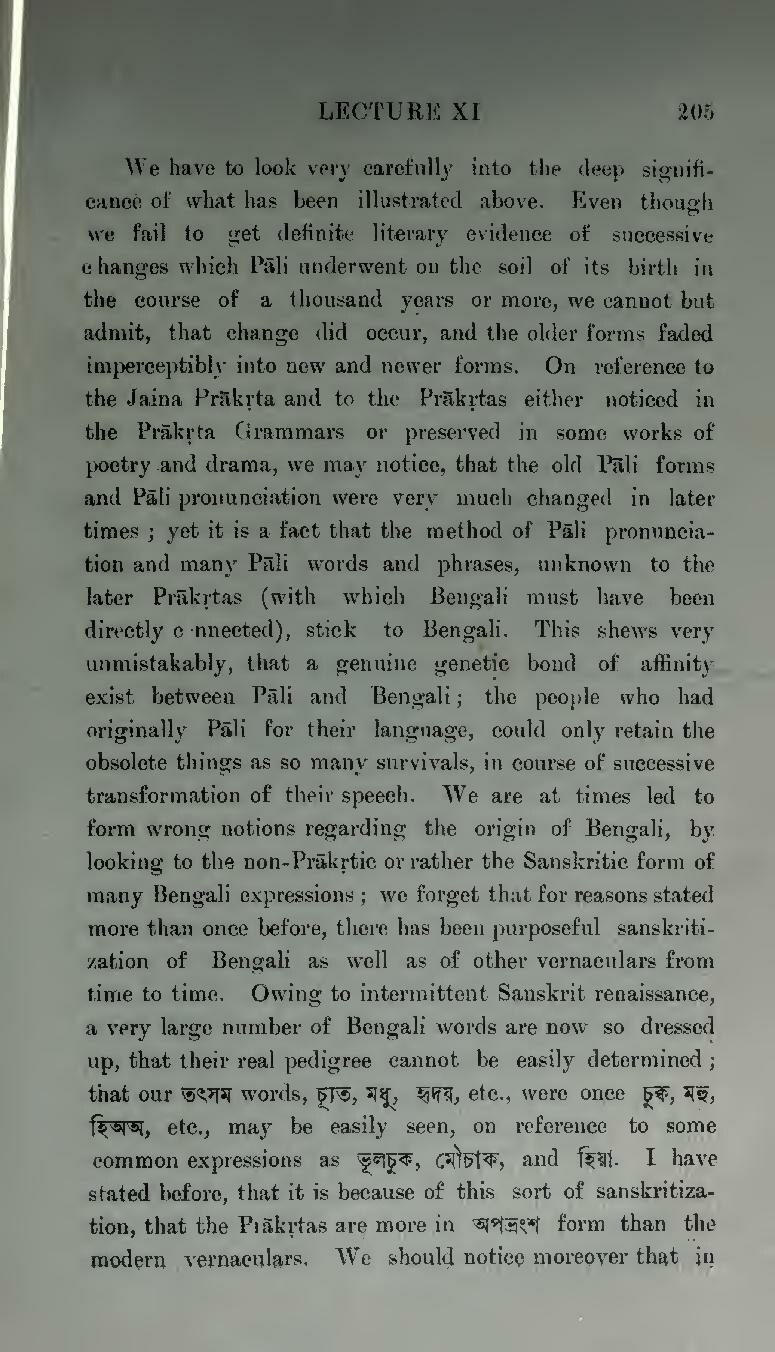We have to look very carefully into the deep significance of what has been illustrated above. Even though we fail to get definite literary evidence of successive changes which Pāli underwent on the soil of its birth in the course of a thousand years or more, we cannot but admit, that change did occur, and the older forms faded imperceptibly into new and newer forms. On reference to the Jaina Prākṛta and to the Prākṛtas either noticed in the Prākṛta Grammars or preserved in some works of poetry and drama, we may notice, that the old Pāli forms and Pāli pronunciation were very much changed in later times; yet it is a fact that the method of Pāli pronunciation and many Pāli words and phrases, unknown to the later Prākṛtas (with which Bengali must have been directly connected), stick to Bengali. This shews very unmistakably, that a genuine genetic bond of affinity exist between Pāli and Bengali; the people who had originally Pāli for their language, could only retain the obsolete things as so many survivals, in course of successive transformation of their speech. We are at times led to form wrong notions regarding the origin of Bengali, by looking to the non-Prākṛtic or rather the Sanskritic form of many Bengali expressions; we forget that for reasons stated more than once before, there has been purposeful sanskritization of Bengali as well as of other vernaculars from time to time. Owing to intermittent Sanskrit renaissance, a very large number of Bengali words are now so dressed up, that their real pedigree cannot be easily determined; that our তৎসম words, চ্যূত, মধু, হৃদয়, etc., were once চুক্ব, মহু, হিঅঅ etc., may be easily seen, on reference to some common expressions as ভূলচুক, মৌচাক, and হিয়া. I have stated before, that it is because of this sort of sanskritization, that the Prākṛtas are more in অপভ্রংশ form than the modern vernaculars. We should notice moreover that in
